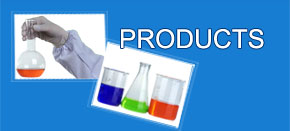

Mobile version







1. Blockage of suspended matter
Suspended matter in raw water may stop in the hole of resin layer, and then increase current resistance and cover on the surface of resin grain thus reduce its exchange capacity.
In order to prevent suspended matter from blocking, strengthen pretreatment of raw material to reduce content of suspended matter in water. .For eliminating suspended matter of resin layer, adopt the means of increasing backwashing number and time or rinsing with compressed air.
2. Iron pollution
Iron of cation resin mainly comes from iron ion in raw wafer, especially molysite used as coagulant. Iron of anion resin mainly comes from regenerating solution. For polluted resin, its color may become darker and exchange capacity may decrease which can accelerate degradation of anion resin.
Usually we soak resin in high concentration muriatic acid (10-15%) with depressor for 5-12h or more to eliminate iron compound ,or treat with citric acid, aminotriacetic acid, EDTA complex and etc.
3. Calcium sulfate settling
It's possible to separate out calcium sulfate settling in resin layer with improper treatment when to regenerate calcium type cation resin with vitriol .At this time, it's not only difficult to rinse after regeneration ,but also with rigidity in eluate and low resin exchange capacity.
To prevent calcium sulfate settling, first reduce the concentration of regeneratant vitriol, second accelerate flow rate of regenerating solution, last stepwise regeneration----increase concentration and slow down flow rate gradually. Soak with 5-10% spirit of salt for 1-2 day(s) ,or regenerate for several times with hydrochloric acid as long as calcium sulfate settling is founded.
4. Silicon pollution
Silicon compound pollution occurs in strongly basic anion exchanger, especially in strong, weak type resin combined application equipment and system which usually result in declination of desiliconi-zation efficiency in anion exchanger.
The cause of this kind of pollution is insufficient regeneration, or resin doesn't regenerate in time after failure. Process method----soak in dilute warm lye with 2% concentration and approx 40℃ temperature .When the pollution is serious, rinse with 4% warm sodium hydroxide solution cyclically.
5. Oil pollution
Oil mainly adheres to resin framework or resin surface which makes resin exchange capacity low and periodic water amount less.
First we should find out the reason and eliminate failure to prevent oil from proceeding to leak. Rinse contaminative resin with 20-40℃, 8~10% sodium hydroxide cyclically and keep concentration of solution. Also rinse with solvent (petroleum ether, 200# solvent petroleum) or surface active agent (polyoxyethylene octane alkylphenol)
6. Organic matter pollution
Styrene type strongly basic anion resin is liable to suffer from Organic matter pollution, its symptoms are: (1) resin color becomes darker (2) exchange capacity declines (3) conductance of water exit increases (4)PH value of water exit declines (5)content of silicon dioxide increases (6) water amount of rinse increases
One of the basic measures is to remove organic matter in water as much as possible during pretreatment such as macroporous weakly basic anion resin, even crylic acid anion resin.
Restoring method in common use is basic salt method, namely make 10%NaCL+4--6%NaOH mixed liquor get across resin layer slowly with amount of three resin beds volume ,when across the second bed, soak resin for 8 hours or age overnight, then across the third bed volume mixed liquor. Mixed liquor needs intensifying to 40~50℃. If add 1% sodium phosphate or sodium nitrate in mixed solution, the effect will be much better.
When the basic salt method is not effective enough, take rinsing with sodium hypochlorite solution into consideration. At this time, in anion monobed or mixed bed system, use at least one bed volume 10%NaCL solution to pass resin layer to make resin void completely. Concentration of sodium hypochlorite solution is 1% of effective chlorine content, amount is three resin beds volume. Soak solution of the second bed volume in resin bed for 4h without heating .In the end, sodium hypochlorite of trace quantity must be rinsed including waste solution in sewer.